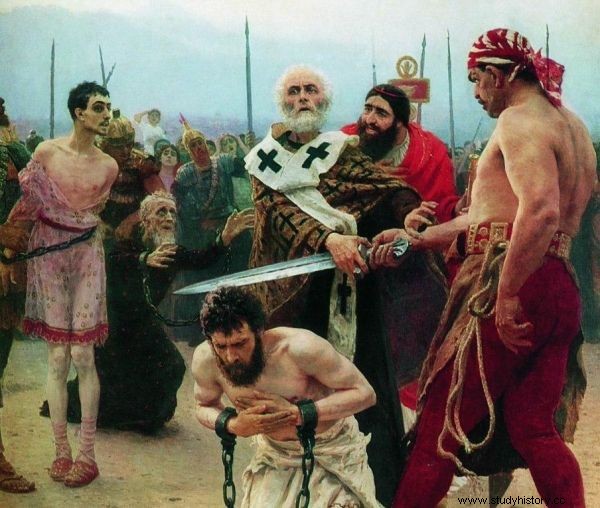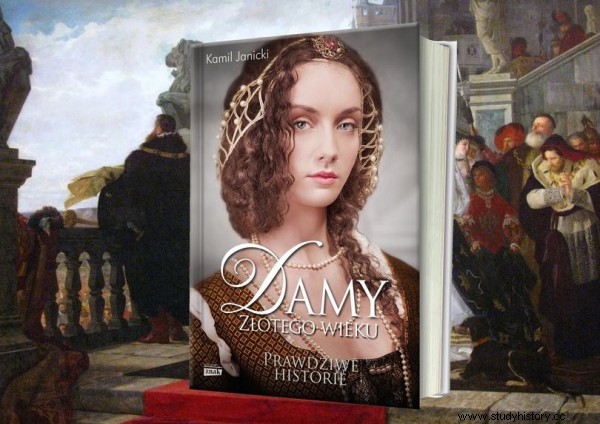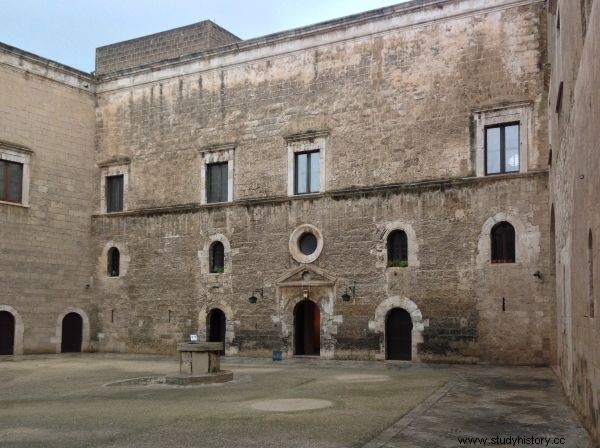The jovial bearded man in red pajamas does not live at the North Pole at all. His dead, dried corpse was stolen by Normandy pirates. And a certain Polish queen has surprisingly much to do with it.
Little is known about the historical Saint Nicholas - the man who became the pretext for creating a commercial and pop-culture blown shell called 'Santa Claus'. He was the bishop of Mira in Asia Minor. This is what every child can say. And that is roughly where common knowledge ends. It is a pity to bend over the life of Bishop Nicholas. As befits a Byzantine saint, he was a walking stereotype.
Apparently, he lived in the 3rd or 4th century, but it was not until several hundred years later that the first more detailed information about him appeared. He was praised as a kind of ancient Saint Francis. A boy from a wealthy family who gives away all his fortune and plunges into fanatical asceticism. And then he dies in agony. There was no escape from the latter - in the early Middle Ages only martyrs deserved a halo of holiness.
Dead Santa against Muhammad
From who Saint Nicholas was (and whether he was), his posthumous fate is much more interesting. Centuries after the death of the alleged bishop, a cult flourished in Mir centered around the tomb considered to be his eternal resting place. Pilgrimages from all over the Mediterranean basin came to the city.

Eastern part of the Roman Empire with the city of Mira marked.
However, the situation in Asia Minor was not easy. From the 7th century on, a Muslim battering ram methodically demolished what was left over from the Eastern Roman Empire. Finally, at the end of the 8th century, Mira herself fell into the hands of the caliphate.
Who will save the saint (and saint)?
Legend has it that the uncouth Saracens then tried to plunder the tomb of Nicholas. Only their stupidity (or God's hand) made them break into the neighboring, insignificant mausoleum instead of the burial place of the great bishop. This story seems too schematic. It was an excuse for further events rather than a representation of the facts.
In the Christian world - which is becoming increasingly obsessed with relics - a tremendous uproar has arisen. There were calls from various places to "save" Saint Nicholas from the infidels. It took over two hundred years, however, and the specter of a new, this time Seljuk threat, to turn words into action. The first to act were representatives of two Italian trading cities:Bari and Venice.

Saint Nicholas of Myra saves those condemned to death. Picture from the 19th century.
Competitors put in the ring
Bari, the port lying right under the so-called "spear of the Italian shoe", today is a somewhat forgotten, quiet capital of Apulia. In the 10th century, however, it was a real melting pot of cultures and an important trade hub.
Every power in the region tried to put its paw on it. Arabs, Greeks, Germans, and finally - militant Normans ruled here. It was under the authority of the latter that the plan to abduct the ankles of the Byzantine saint was formulated.
Venice was at that time a much less important center. It is not a republic yet, let alone an economic empire. More like a secondary port town looking for its own way to power.
Each side hoped that the relics would bring her prestige and tangible income related to the pilgrimage business. In the 11th century, pilgrimages were the only type of tourism in Europe. And because thousands of people, often wealthy people, set out on them, there was also a lot to fight for. And all holds were allowed.

The article was written in connection with the book by Kamil Janicki. Ladies of the golden age (Horizon Label 2014). Buy with a discount on empik.com.
Landing on enemy tomb
The preserved versions of the story differ in detail. According to the most realistic scenario, Barry sailors, claiming to be merchants, moored in the port of Mira in the spring of 1087. At that time, the city was still under the Byzantine Empire and no one considered the guests from Italy as enemies.
The Barians, however, had to hurry. They knew perfectly well that competitors from Venice were following their heels. And that they can reach Mira even on the same day. It was time to go to action.
The members of the expedition treated the matter with military precision. First, they sent two men to spy. The Spitz determined that the saint's tomb was guarded by only four monks. The road was open.
47 pilgrims with swords
There was an immediate landing of the entire squad:forty-seven armed men. Still no one stopped them. Saint Nicholas was considered the patron saint of sailors, so it was not surprising that the crew wanted to pray at his grave.

In the second half of the 11th century, Bari fell into the hands of the Norman ruler Robert Guiscard. In his red jacket (see picture above) he looked more like the stereotypical Santa Claus than the real Bishop of Mira ...
Even the brothers who guard the mausoleum did not fear. Without hesitating, they showed the armed newcomers exactly where the martyr's bones rest. The Barians already knew everything, but they did not want to unnecessarily murder saintly people. They offered the monks that they would buy the saint's remains for 300 gold coins. Only when the hosts refused - they tied them up, gagged them and probably beat them up.
There was a serious risk that the brothers had nevertheless managed to warn the townspeople. There was no more time to waste now. The sailors violently began to break the tomb plates and rummage in the ground. They took with them as much of the remains as they could easily pack, and ran back to the deck.
They only inspected the cargo after they had gone to sea and had moved to a safe distance from Mira. Even if the success was not complete, it was. The Barians were returning home with Saint Nicholas. Or at least - with just over half of Santa Claus.

Castle in Bari, contemporary view. The construction of the fortress began shortly after the body of Saint Nicholas was brought to the city (photo by Kamil Janicki).
I'll steal half the Santa out of hand
On May 9, 1087, the ship called at the port of Bari. Here the sailors were no longer pirates. Overnight they turned into heroes of the entire peninsula.
The construction of St. Nicholas' Basilica began immediately. The investment was carried out at an express pace. Already in 1089, Pope Urban II came to Bari to solemnly deposit the remains of Nicholas in a special crypt. The whole church was built over the next several dozen years. It can still be admired today.
Seemingly, it is a typical, austere shape characteristic of Romanesque churches. Up close, however, it does not seem so obvious. The basilica was built as a mishmash of styles and materials. Previously, the palace of the Byzantine governor stood on this site. Different stones, different foundations were used. No wonder there are more columns in one nave and fewer in the other. The church towers are also completely different.

Crypt in the basement of the basilica. It is here that the remains of Saint Nicholas (photo:Kamil Janicki) are buried.
Finally, a real culture shock awaits anyone who goes down to the crypt where Santa's relics are buried. One gets the impression that the Barians not only stole his remains, but also borrowed the entire interior of a typical Byzantine church from Asia.
The contrasts do not end there. The church where the most famous saint in the world rests also has its less known Polish face.
Choice neighborhood
Today, hardly any Barry will admit it out loud. In the basilica, there is not even one small plaque devoted to the Jagiellonians or the Vasa, but two hundred years of history cannot be erased. The truth is that the Basilica of Saint Nicholas in Bari throughout almost all modern times was ... the representative church of Polish kings!
It is here that the body of Queen Bona Sforza rests , after she was murdered by her own courtiers in 1557. At the end of the 16th century, her daughter Anna Jagiellon turned the basilica into a great mausoleum in honor of her mother. She built her magnificent tomb, topped with a series of sculptures, including a realistic full-size figure depicting Bona herself.

In the main nave of the temple there is a mausoleum and the tomb of the Polish queen - Bona Sforza (photo by Kamil Janicki).
Over the next decades, every Polish monarch considered it his duty to decorate the Basilica with new paintings and works of art. The entire Vasa dynasty looked down from the walls at the praying Italians.
Today, almost nothing is left of it. At the beginning of the 20th century, the temple's hosts deliberately removed and destroyed all traces of Bari's relationship with Poland. Only a fragment of the mausoleum has survived. However, no devastation will change the indisputable fact. The Polish queen Bona Sforza will forever remain the neighbor of Saint Nicholas. They are only a few meters away.
Source:
You can read more about Bari, the extraordinary history of this city and Apulia's relations with Poland in the latest book by Kamil Janicki, entitled "Ladies of the Golden Age" (Znak Horyzont 2014). The article is based on the literature and materials collected by the author during the work on this publication.
